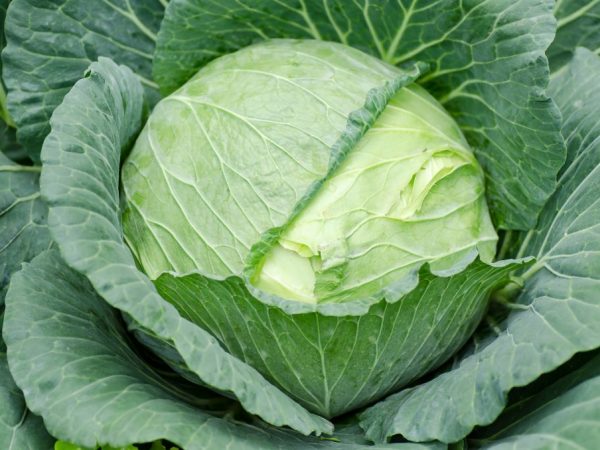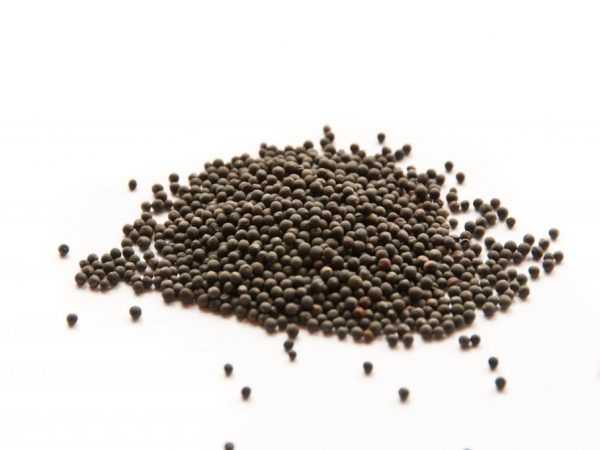Description of cabbage Nadezhda
Cabbage Nadezhda belongs to hybrid varieties. As you know, all first-generation hybrids are characterized not only by high yield rates, but also by excellent resistance to negative environmental factors (temperature change and disease). A detailed description of the Nadezhda cabbage variety will be considered in the article.

Description of cabbage Nadezhda
Characteristics of the variety
Nadezhda white cabbage was bred on the territory of Russia in 1939 as a result of crossing the Enkgoisen and Dense cabbage varieties.
In the early 70s of the 20th century, the cabbage variety Nadezhda was included in the State Register of the Russian Federation. All characteristics indicate that it can be grown in all regions of the country, even in Siberia and the Urals, where temperatures are constantly kept.
Cabbage variety Nadezhda is mid-season. The growing season lasts only 110 days from the moment the first shoots appear. Ripeness is observed after 90 days from the moment of planting in a permanent place.
The yield of this variety is high. From 1 hectare, you can collect from 500 kg to 1 ton of high quality products.
Description of the plant
Leaves of white cabbage Nadezhda are rather large, light green in color. Their entire surface is covered with a small amount of wax, which significantly compacts the structure of the sheet. Their shape is round, with small wavy areas at the edges.
Characteristics of the fetus
The head is rounded. The fruit will be slightly flattened. This variety is characterized by a high density of structure, which allows harvesting with machines.
The inside of the vegetable is white. On average, the weight of an individual head of cabbage reaches 4-5 kg. In some cases, with careful care, the weight of the fetus can reach 6 kg.
The fruits of the cabbage variety Nadezhda are universal in use. It can be used fresh or for preparing various dishes. It is quite actively used for fermentation. Excellent taste indicators are noted both fresh and processed.
Growing
Cabbage Nadezhda is suitable for growing only in well-lit areas. If you plant in a shaded place, then the head of cabbage will form poorly, it will become rather loose. It is better to choose those areas where legumes used to germinate. It is quite important to choose the right soil:
The soil must be fertile and contain useful trace elements. Pay attention to the level of its acid-base balance is not more than 4%, this will facilitate the cultivation of the culture. It is better to add organic fertilizers (humus, manure or peat) to the soil in advance, in the fall. This will significantly increase soil fertility.
Seed treatment
Planting seeds must be pretreated. To do this, they should be placed in hot water. The optimum temperature for disinfection is about 50 ° C. After 20 minutes, the seeds are lowered under a stream of cold running water and kept in this position for 1 minute.
Planting seeds

Seeds should be planted in moist soil.
Planting seeds in containers is carried out only after the soil in them is moistened. The planting depth is about 1.5 cm, and the distance between the seeds is about 5 cm.
The best germination rates are achieved only if the temperature regime of the room in which the containers are stored is regulated. The first few weeks after planting, the temperature should be around 20 ° C. On day 21, it can be reduced. It is better if the temperature is around 16 ° C during the day and at least 8 ° C at night. This will allow the seedlings to be prepared for outdoor planting.
Landing in the ground
It is possible to plant the prepared material in open ground only after the height of the shoots is at least 20 cm. It is by this moment that 3-4 pairs of main leaves will have time to form on them. The distance between the rows should be about 60 cm, and between the holes 50 cm. This will allow the roots not to intertwine with each other.
Care advice
Watering
White cabbage Nadezhda must be watered once every 3-4 days. The vegetable does not like excess moisture - this increases the risk of fungal diseases. It is recommended to water with warm water. This significantly increases the rooting of the plant in the ground. Watering should be carried out by the drip method so that moisture gets directly into the roots.
Loosening and hilling
After each procedure, you need to loosen the soil and remove weeds. The culture should be spud, because the stump is rather weak. In order to remove the top layer of the earth and not disturb the root system, during the weeding process, it is necessary to deepen no more than 6 cm.
Top dressing
Cabbage variety Nadezhda needs moderate feeding. An abundant amount of them can lead to deformation of the plant. It is recommended to reduce the level of mineral fertilizers or not use them at all. It is believed that this can improve the environmental performance of products.
- The first feeding is carried out 3 weeks after planting in a permanent place. At this point, an infusion of their chicken manure should be used (2 kg of fertilizer per 10 liters of warm water). It is necessary to water the plants in such a way that about 2 liters of the substance fall under each root.
- The second feeding, which is carried out 10 days after the first, involves the use of humus. About 100 g of fertilizer should be applied under each bush. After which they put plentiful watering. This will allow all nutrients to be absorbed into the ground.
- The third feeding is carried out at the beginning of the formation of the fetus. At this point, a solution of wood ash should be used (for 5 liters of water, 200 g of fertilizer). About 500 ml of the preparation is poured under each plant.
Pests and diseases
This variety is resistant to diseases such as blackleg, keela, and gray mold. The main disease is bacteriosis. You can get rid of it by spraying with a special manganese solution (for 10 liters of water, 3 g of the drug).
In the fight against midges and aphids, the drug Fitoferma will be an active agent: in 10 liters of water, you need to dilute 20 ml of the drug, and spray it every 10 days, until the pests are completely destroyed. To get rid of the flea, you should sprinkle the bushes with dolomite flour (10 g for each bush). You can protect yourself from various pests if you plant seedlings between marigolds.
Conclusion
Due to its unpretentious care and high yield rates, the Nadezhda variety is in special demand in the modern market. Many gardeners grow this crop not only for their own use, but also for further sale.


